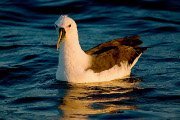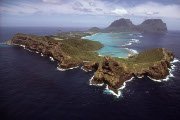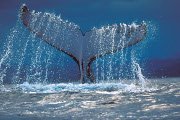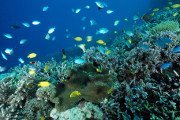Ghost Nets Initiative
Abandoned, lost or discarded fishing gear – often referred to as ‘ghost gear’ or ‘ghost nets’ – is one of the most damaging types of plastic pollution found in our oceans.
Ghost nets can be kilometres long and weigh up to several tonnes. Once lost or discarded, they can drift for hundreds of kilometres unchecked, causing injury or death to the many marine species that become entangled in them.
The Australian Government has launched the Ghost Nets Initiative to tackle the issue of ghost nets and plastic litter in the waters and beaches of northern Australia.
Latest news
Pilot study on ghost net recycling pathways in Gulf of Carpentaria now complete
Thursday 14 September 2023
A pilot study exploring recycling pathways for ghost nets in the Gulf of Carpentaria is now complete.
Grants to tackle ghost nets and marine debris in Australia’s north
Wednesday 24 May 2023
Eleven new ghost net grant projects worth over $3 million are being funded by the Australian Government to help detect, remove or dispose of marine debris in northern Australia.
Ghost Nets Innovative Solutions grants
Monday 10 October 2022
The Director of National Parks launched the Ghost Nets Innovative Solutions grants program on 10 October 2022.
Finding solutions for ghost nets in northern Australia
Friday 10 December 2021
A needs analysis and feasibility study funded as part of the Ghost Nets Initiative is now complete.
GPS tracking trial a success: two ghost nets removed from Torres Strait
Tuesday 14 September 2021
Two discarded foreign fishing nets have been removed from the Torres Strait with the help of a GPS tracking device, as the Australian Government makes new waves in its fight to tackle abandoned, lost and discarded fishing gear under the Ghost Nets Initiative.
New study sheds light on ghost net hotspots
Tuesday 14 September 2021
A study funded under the Australian Government’s ghost nets initiative has identified Queensland’s Cape York Peninsula and the Northern Territory coastline south of the Gove Peninsula as key hotspots for foreign ghost nets.
Ghost net impacts
The prevailing currents and conditions in the Arafura and Timor Seas and the Torres Strait cause marine debris to accumulate in the Gulf of Carpentaria, which is recognised as a global marine debris ‘hot spot’. Although this area is remote and sparsely populated, it has one of the highest rates of marine debris accumulation in Australia.
Numerous marine species are regularly entangled in derelict fishing gear, including four vulnerable or endangered marine turtle species found in Australian waters – olive ridley, hawksbill, green and flatback turtles.
Ghost nets that wash up or are left on beaches can re-enter the marine environment during large tidal and storm events. They also have the potential to disturb and displace coastal plant and animal communities, especially turtles and other nesting species. The materials that make up these ghost nets slowly deteriorate to eventually form microplastics, which can damage natural food webs and ecosystems.
Ghost Nets Innovative Solutions grants
The inaugural Ghost Nets Innovative Solutions grants round was launched in October 2022. After an open competitive process, 10 organisations were awarded grants to undertake projects to better detect, collect or dispose of ghost nets and other harmful forms of marine debris in northern Australian waters, and to raise public awareness of the issue.
The successful projects range in value from $110,000 to $400,000 and support a broad range of nature-positive approaches to tackling the ghost nets challenge. Almost $3 million in funding has been awarded.
The successful projects are:
- Sea Shepherd Australia – Untrashing Arnhem
Sea Shepherd’s project focuses on a series of beach clean-ups with the Anindilyakwa and Dhimurru Land and Sea Rangers. This important work will culminate in free community screenings of a film highlighting the issue of marine pollution.
- Agency Projects – Intersecting Indigenous innovation, art and design
Agency Projects will support a delegation of Traditional Owners and Indigenous artists to travel to Melbourne for Melbourne Design Week, where they will use art, song and storytelling to highlight the issue of ghost nets and marine debris in northern Australia. The second phase of the project involves a think-tank on Country, which will inform a published report.
- The University of Adelaide – Toys for Turtles
This project takes a multifaceted approach to the problem of ghost nets and marine debris including scientific excursions to survey and remove plastics, facilities to recycle plastic into reusable items and the development of cultural teaching models.
- Anindilyakwa Land Council – Custom-designed vessel
A purpose-built vessel will increase the capability of Anindilyakwa Land and Sea Rangers to remove over 250 existing ghost nets mapped across the Groote Archipelago region in hard-to-access coastal areas.
- Plastics Pirate – Creating a circular economy
Plastics Pirate will deliver advanced plastic recycling equipment to remote communities in the Gulf of Carpentaria. The equipment will create a usable raw material from marine debris, which can then be stored, extruded into plastic products, used in pyrolysis or input into Indigenous art. A second phase of the project focuses on education and awareness-raising through a video and children’s book.
- Spiral Blue – Ghost net detection using AI
This innovative project involves the development, verification and implementation of a machine learning/artificial intelligence model that can detect marine debris (such as ghost nets) in satellite imagery. The successful model will be applied to newly acquired spatial data to track marine debris and assist local teams with clean-up efforts.
- The Pacific Collective – Hunter-Gatherer MaMa
This project addresses the ghost net and marine debris recycling gap by creating an Indigenous women’s social enterprise called Hunter-Gatherer Mama. Artwork and handicrafts created from ghost gear will be sold at ‘fair trade’ prices through a digital marketplace platform, creating a valuable materials supply-chain.
- Torres Strait Island Regional Council – Marine Debris Taskforce
Torres Strait Island Regional Council will strengthen its capacity to manage ghost nets and marine debris throughout the region by appointing a Marine Debris Coordinator, who will be responsible for implementing a variety of activities aimed at tackling the problem. The project will work collaboratively with regional partners and employ technology such as drones, GPS satellites and data collection to better manage these waste streams.
- Charles Darwin University – Drone surveys around the Groote Archipelago
The integration of uncrewed autonomous aircraft (a.k.a. drones) has been shown to improve the efficiency and effectiveness of clean-up operations. This project will harness specialised drone technology to identify and map the distribution of ghost nets across almost 1000 km of coastline within the Groote Archipelago.
- TierraMar – Recreational fishing roundup and recycling
TierraMar’s innovative project focuses on crab traps and other marine debris found in key recreational fishing hotspots in the southern Gulf of Carpentaria. This collected debris will be transported to NSW and recycled into recreational fishing products made from UNSW's MICROfactorie green ceramics. These products will be sold across Australia through recreational fishing supply outlets, with all proceeds going towards fish habitat restoration programs in northern Australia.
The 10 projects commenced in the first half of 2023 and will run for up to two years.
What else is happening under the Ghost Nets Initiative?
The Ghost Nets Initiative is being delivered by Parks Australia in partnership with government agencies, Indigenous organisations and other key stakeholders. Up to $14.8 million has been committed over four years to address the challenge of ghost nets and plastic litter in the waters and beaches of northern Australia, with a focus on the Gulf of Carpentaria. Projects under this initiative will help to improve the health of our oceans, reduce threats to our marine life and boost Indigenous employment.
Building on the efforts of Indigenous communities, environmental groups and private industry, the Ghost Nets Initiative is focused on the following activities:
- Delivering new technology and other projects to better detect, collect and dispose of ghost nets, including the $3 million Ghost Nets Innovative Solutions grant program.
- Working with Indigenous ranger groups to collect data on the source of ghost nets and coordinate retrievals and marine debris beach clean ups in the Gulf of Carpentaria, one of the nation’s hot spots for ghost nets drifting from foreign waters.
- Conducting new trials in collaboration with the Australian Fisheries Management Authority (AFMA) and Maritime Border Command (MBC) - a multi-agency taskforce, within the Australian Border Force - to attach GPS tracking devices to ghost nets when an initial retrieval is not possible due to unsafe conditions. This will enhance our ability to continually track the nets while they are drifting and arrange for their immediate retrieval by an appropriate vessel.
Report a ghost net sighting
If you see a ghost net, please report it to Parks Australia by providing a position of the sighting and a description of the net, along with any photos to Marine.Compliance@dcceew.gov.au. You can also call the 24 hour marine compliance duty officer on 1800 852 975.
Contacts
Ghost Nets Taskforce
Marine and Island Parks Branch
GPO BOX 390, Canberra City, ACT, 2601
Department of Climate Change, Energy, the Environment and Water
Edgar Waite Building 203 Channel Highway
Kingston TAS 7050
Email: GhostNets@dcceew.gov.au
Useful Links
Stay in touch
Subscribe to receive important updates about Australian Marine Parks. Enter your email address and click "join now".









